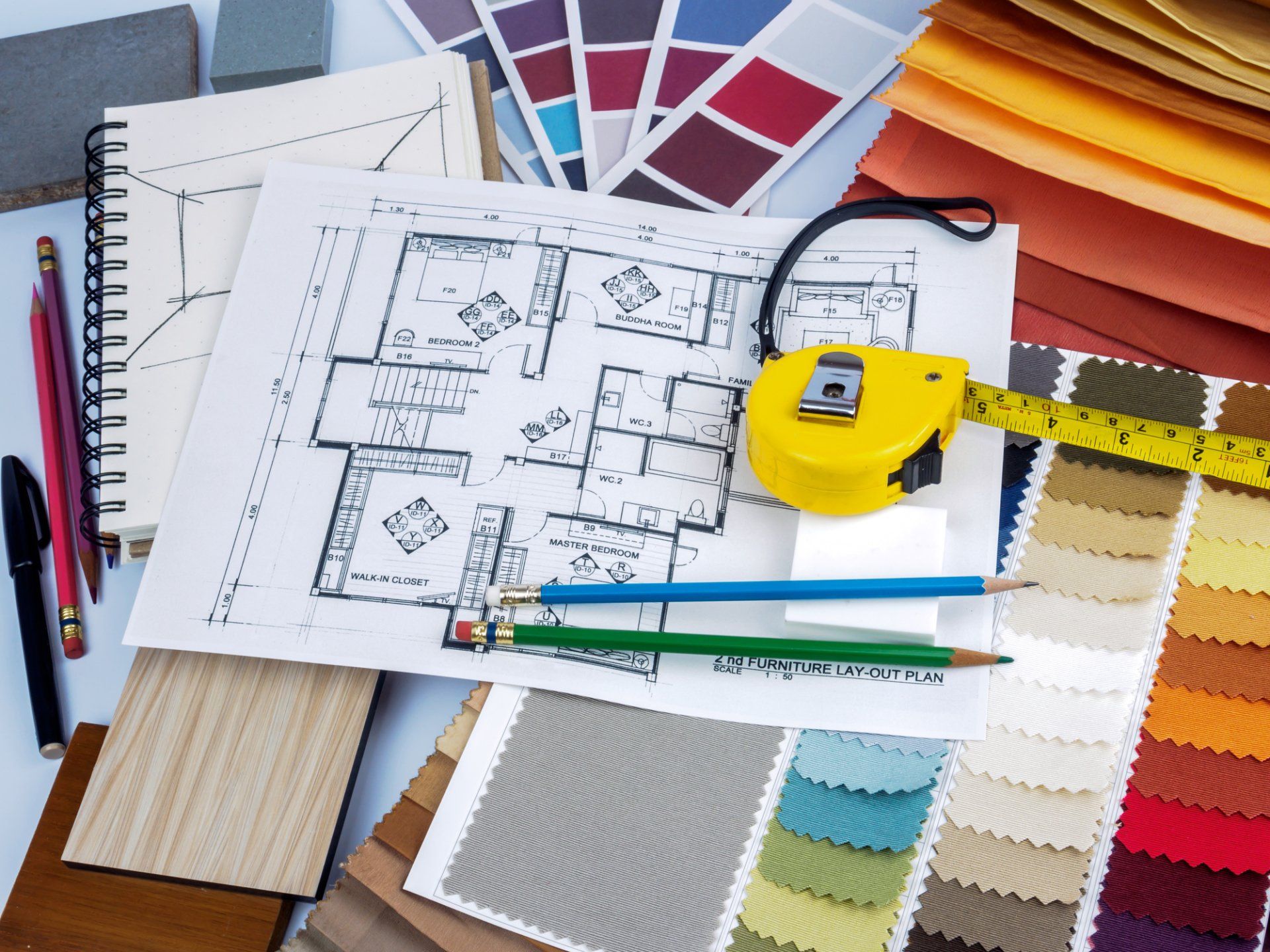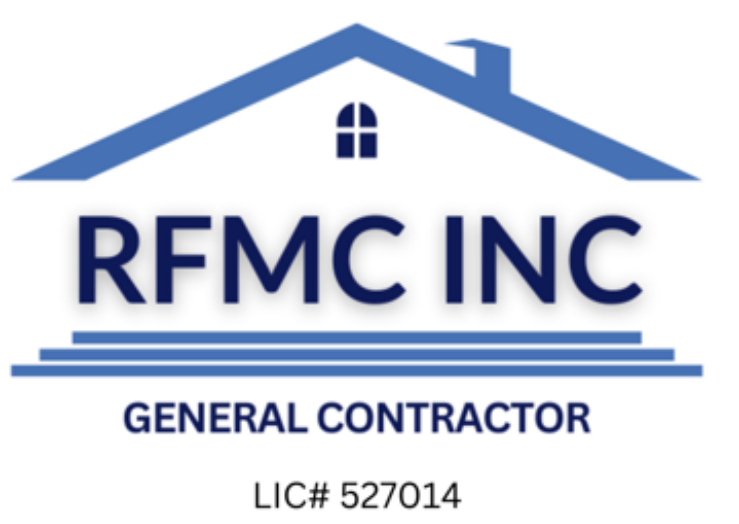Information to Help Your Remodeling Journey

Follow these 10 tips when you embark on an exciting home remodeling project.
1. Establish effective two-way communication with the home remodeler
It’s essential to have good communication for a smooth home remodeling project. Does the remodeler listen? Does he or she answer questions clearly and candidly? Can you reach him when you need to? Does he return phone calls promptly? Does he let you know when problems arise and work with you on solving them?
2. Make sure you are compatible with the contractor
You’ll spend a lot of time with your remodeler so it’s important to have a good rapport and trust in him or her.
3. Set a clear and mutual understanding about the schedule
You and your home remodeler should agree on the schedule up front to avoid conflict and problems later in the project.
4. Request a written proposal
Often, two people remember the same conversation differently. Get the proposal in writing and work with the remodeler to ensure it reflects your wishes.
5. Get a clear and mutual understanding on miscellaneous details up front
There are a lot of little details that need to be settled before work starts. What times of day will they be working? How will he or she access the property? Who will handle cleanup? Will they protect your property?
6. Remember to be flexible
Remodeling is an interruption of your normal life. Remember to be flexible during the project so that you can handle the unexpected and go with the flow.
7. Discuss and agree on how change orders will be handled
With home remodeling there is always the chance you may want to change materials or other project details during the job. Before work starts, make sure you agree with your remodeler about how these changes will be handled. Also understand that changes could affect the schedule and the budget, so it’s important you have all changes in writing.
8. Agree on a well-written contract that covers all the bases
The contract should include these elements: a timetable for the project, price and payment schedule, detailed specifications for all products and materials, insurance information, permit information, procedures for handling change orders, lien releases, provisions for conflict resolution, notice of your right under the Federal Trade Commission’s Cooling Off Rule (your right to cancel the contract within three days if it was signed someplace other than the remodeler’s place of business), and details on the important issues (such as access to your home, care of the home, cleanup and trash removal).
9. Ask for a written lien waiver from the home remodeler upon completion of the work
If the remodeler hires subcontractors for portions of the work, then it is their responsibility to see the subcontractors compensated. In order to ensure this has been done and to protect yourself, ask for a written lien waiver when the work is finished. This document will verify everyone has been paid.
10. Establish a project plan, covering all phases and dependencies in the work.
Plan your big picture goals with the remodeler and discuss your needs. Hire a remodeler who will plan with you, listen to concerns and answer questions.

Your 80-year-old aunt is coming to stay for a few days. You’re looking forward to the visit, but realize your home may not be entirely “older-generation” friendly. To help enhance the safety and comfort of your visitor, especially one who may have some of the physical challenges that come with aging, here are a few quick and inexpensive things you can do to make the time less stressful for you and more comfortable for your guest:
Consider pathways in the house. Clear obstacles, and maybe even move furniture that a person usually has to maneuver around. Move any electrical cords that are where a person might walk – perhaps taping them to a wall or using a hook. Clear stairs of any objects—shoes, books, and other personal items that tend to collect on the lower treads. Also check that railings on stairs inside and out are secure, and make repairs where needed.
Lighting is crucial. Put night lights in bathrooms, the guest bedroom, any hallways near the guest bedroom, and perhaps in the kitchen. Make sure there is a lamp or light switch within easy reach of the guest bed so that your visitor can keep a light on until safely tucked in. Well-lit outdoor walkways and entrances are also key for coming or going when it is dark.
Be sure the shower your guest will use has a non-slip floor. To enhance the traction, apply non-slip strips or a suction-attached non-slip mat, both readily available at home improvement stores.
Secure or, preferably, remove any throw rugs, including bathroom mats. Edges of rugs can be a tripping hazard, and even a slight scoot can affect a person’s balance. If there are rugs you want to secure rather than remove, non-slip pads can help, but safer still would be to apply double-sided carpet tape or even caulk to attach the rug to the floor. If you choose one of these methods, be mindful that you don’t mar the floor underneath.
Identify seating in your gathering rooms that is appropriately firm, high in the seat, and preferably that has arms to help a person easily sit down and get up. A chair that is too soft or too low to the ground can strand a person awkwardly. If in doubt about the available seating in the room, bring a dining chair with arms into the room as an alternative.
If you are considering other more long-term home modifications for aging in place, be sure to consult a remodeler or contractor who is a Certified Aging-in-Place Specialist. Find one in your area using the CAPS directory.

You want to change the look and feel of your house, but you also want your home remodeling project to look fresh for a number of years and complement the existing features of your home. How do you choose the right project and design for you and your family?
First, take your family’s lifestyle into account when selecting an area of your home to remodel. For example, if you get a lot of traffic through the house, consider hardwood floors. Families who frequently entertain in the kitchen may want to expand the room and add an island or some comfortable chairs. If your bathroom is the place where you escape the world, add a whirlpool tub or a deluxe shower.
After you’ve chosen an area of your home to remodel, the wide array of project options can be both dazzling and intimidating. To get started, consult the resources below, which can give you specific ideas on how to turn your house into the dream home you’ve always wanted.
TV Shows: There are an increasing number of shows and channels focused on decorating and simple home improvement projects to more complex remodels or home makeovers. For example, HGTV features projects that evolve from start to finish on shows like “Buying and Selling” and “Curb Appeal”; check your local television guide for listings.
Magazines: Magazines that cater to home improvement, lifestyle and remodeling can be an excellent source of ideas. Page through publications such as Dwell, Home, House Beautiful, Better Homes and Gardens, Southern Living, Coastal Living, Food and Wine, Country Living, Ladies’ Home Journal and Good Housekeeping to identify projects and materials that might work in your home. Additionally, you can request a wide range of free or inexpensive literature by completing the mail-in coupons inserted in such publications.
Websites/Blogs: Surfing the Web is a great way to find fresh ideas and to research projects. Many remodelers, manufacturers and magazines host websites that feature project photos, buying guides and product information. Web directories such as the NAHB Remodelers Directory can help you find professional remodelers in your area. Other sites such as Pinterest and Houzz have extensive photo collections for inspiration. And, an increasing number of DIY and design blogs created by homeowners themselves can also provide inspiration for simple projects you can do around the house.
Sketches and Floor Plans: No two remodeling projects are the same, but you can gain some insight into how another homeowner solved a space problem by carefully studying sketches and floor plans. If, like most people, you are easily confused by plans and drawings, imagine yourself in the middle of the room or space on the plan.
Books: Browse a bookstore with a well-stocked home improvement section, but beware of books telling you to be your own remodeling contractor. Most remodeling projects call for a level of skill and work hours beyond those stated in these books. The job of a professional remodeler requires experience and competence in a wide range of disciplines, and unless you are highly skilled and licensed in all the trades, you can quickly get in over your head.
Newspapers: Most newspapers publish regular sections devoted to real estate, home design and remodeling. Also, twice a year — usually in the spring and fall — many papers print special home improvement supplements. Each of these sections contains timely articles and useful advertisements on remodeling, home improvement, repair and maintenance.
Friends, Family and Neighbors: Do you know someone who has recently remodeled their home in a style you admire? He or she may still have product manuals, magazines and other helpful information you can borrow, as well as practical advice drawn from his or her own experience.
Remodeling Professionals: One of the advantages of choosing a remodeler early is gaining access to an extensive library of resources prior to starting a project. Once you’ve chosen a contractor, he or she usually can offer you a wide variety of materials, including product manuals, magazines, brochures and blueprints.

Remodeling your home is uniquely different from building a new one. With remodeling, your home becomes the worksite. You live side by side with the project from start to finish. Once construction begins, you’ll probably long for simple pleasures like a dust-free home or a fully functioning kitchen or bath. But the end result will be well worth these inconveniences.
Here are some tips to help minimize the stress involved with a remodeling project.
Open the Lines of Communication
Consistent and open communication between you and your remodeler will enhance your understanding of the project, provide an opportunity to exchange ideas, and ultimately help to make the experience a positive one for everyone involved.
To facilitate this process, you need to:
– Determine who you and your remodeler should contact for daily decisions or an after-hours emergency. For example, your contact may be the lead carpenter for the job, while the remodeler’s contact could be your spouse.
– Designate a backup for each contact person to assure continuity in anyone’s absence. Create a place in your house where the contact persons can leave messages for each other (a securely anchored notebook is a good idea since it is less likely to disappear).
– Speak up. If you are uncertain about any aspect of the project, be sure to let the contact person know.
Prepare for the Pre-Construction Meeting
One way to ensure the success of your project is to plan for and actively participate in a pre-construction meeting. This allows your remodeler to clarify procedures and explain how the job will progress. It also offers both you and your remodeler an opportunity to prepare for those issues that may arise later. You should think of this meeting as a forum for all participants to define their expectations and agree on the anticipated outcome.
Some of the issues you may wish to cover at this meeting include:
– Will you allow your remodeler to place a company sign on your property? Remember that in addition to being a marketing tool, signs help contractors and suppliers locate your home.
– What areas of your home will be off limits to workers?
– Does your house have an alarm system? Will workers need a key or will someone always be there?
– How will you ensure that your children and pets stay out of the work space
– How will trash removal be handled? Where will the remodeler locate the dumpster on your property?
– Does the remodeler anticipate any interruptions of utilities during the project? If so, when and for how long? At certain stages of construction, the project may affect basic household necessities like water and electricity. Will you need to vacate the house at any time?
– What are your expectations regarding clean up? Will sweeping be sufficient for a daily cleaning, or will you need a more thorough cleaning in order to use the space?
– You should also use the pre-construction meeting to establish guidelines for the remodeling crew working on the project.
– What times will workers begin and end work at your home? Be sure to consider the neighbors as well as household members.
– Where can workers park near the jobsite?
– Will you allow workers to use your phone for local business calls?
– Will bathroom facilities in your home be available to workers?
– What is the remodeler’s policy on smoking on the jobsite?
– What is the remodeler’s policy on the use of profanity? If you are especially sensitive to this issue, you should let your remodeler know.
– Will you allow workers to play music at a reasonable volume? Is there any type of music that you do not want played?
Prevent Remodeling Fever
The train-station atmosphere of a remodeling project can lead to remodeling fever. The main symptom of this temporary affliction is feeling a loss of control that results from disrupted routines and the impact on your personal space. The best way to prevent this fever is to prepare well, remember that “this too shall pass,” and focus on the progress being made. A few other suggestions from remodeling pros:
Prepare for inconvenience. A remodeling project can turn your home and — on some days — your life upside down. A kitchen remodel will, of course, affect meal planning. But a little ingenuity and some culinary shortcuts can lessen the impact. Set up a temporary cooking quarters by moving the refrigerator, toaster oven, and microwave to another room. Arrange a dishwashing station in your laundry room. If the weather is warm, fire up the grill and dine alfresco.
Designate a safe haven. Find at least one place in your home where you can escape from the chaos and commotion.
Guard against dust. During a remodeling project, dust has the unfortunate tendency to appear everywhere from lampshades to plates stacked inside your kitchen cabinets. To keep out as much dust as possible:
– Seal off doorways and stairs;
– Turn off central air or heat when workers are sanding and stock up on extra filters so that you can change them often;
– Have deliveries made though a designated entrance;
– Use doormats and temporary floor coverings where appropriate;
– Remove anything that might get damaged by the dust or at least cover it with plastic drop cloths that are taped shut.
Maintain a sense of humor. Remember that certain things are out of your control and it’s best to laugh rather than upset yourself about things like the weather or delayed delivery of materials.
See the remodeling process as an adventure. Tell the kids that you are “camping in” and transform inconvenience into fun. Along the way, celebrate as different stages of the project are completed.

Ready for a new look in your home, but don’t have a budget for a big remodel? There’s nothing faster or more economical to give your home a quick update than by painting your rooms a new color. A well-planned and executed paint job can make a room look larger or cozier, can accent features or hide flaws, or reflect your own personal flair.
Here are some tips to help make your painting project a success.
Choose the Right Color
Go to a paint or home improvement store and get swatches of colors to take home. Select a lot of options, chances are the florescent lights in the store will make the colors look completely different than they will in your home.
See how you like the colors on different walls and in different lighting conditions — early morning sun, midday and nighttime lamplight — to make sure you’re happy with your final choice.
Another option is to paint a few colors on your walls. Many companies offer sample sizes in either a selection of popular colors, or in any color they offer. These samples cost much less than a full gallon and give you the opportunity to try them out on the wall before spending a lot of money.
Select an Appropriate Finish
Choose a paint finish depending on how the room or surface will be used:
A flat or matte finish helps conceal flaws and absorbs light in well-lit rooms.
Satin or eggshell finishes are a good choice for high-traffic areas such as foyers, family rooms, kitchens and bathrooms because they clean more easily than flat or matte paint.
Baseboards, molding and railings look best in a semi-gloss finish, which is a shiny finish that is the easiest to clean and provides a contrast to the walls.
Many paint companies also now offer “all-in-one” paints that already contain primer. These enable you to paint over a darker paint color or area that’s been repaired with patching compound without having to apply a coat of primer before the paint.
Stock Up on Supplies
Here are the basic supplies you’ll need whether you’re painting several rooms or just one:
– Brushes and rollers
– Paint trays
– Painter’s tape
– Sheets or tarps to cover furniture
Prepare the Room
Give yourself adequate space to maneuver while you paint and protect your valuable furniture and belongings. Move as much of the room’s contents as you can either out of the room or away from the walls.
Cover whatever is going to stay and the floor, especially where it meets the walls, with old sheets or plastic tarps.
Next, remove the switch plates and electrical outlet covers. It’s easier than trying to cover them with painter’s tape and definitely looks better — and is safer — than just painting over them. Don’t forget to repair nail holes, dents or chipped spots with a patching compound.
If you have any doubt about your ability to paint a perfectly straight line, or you don’t have a very steady hand, use painters tape to protect features you don’t want paint to get on. This could include baseboards, window and door trim, and where the wall meets the ceiling or crown molding. Make sure the tape adheres properly by running a finger or mixing stick along the tape.
Clean the walls with a mild detergent solution or wipe them with a damp lint-free cloth to remove cobwebs and dust that will cause blemishes in your paint. Vacuum or dust the room to make sure dust or animal hair doesn’t get in your paint and on your walls.
Now you’re ready to make a colorful change!

Sooner or later you may join the millions of people who remodel their homes each year. Perhaps it’s at that moment when you realize that avocado green and harvest gold are no longer the “in” colors for today’s trendy kitchens. Or maybe you have an epiphany one day as you stand in line to use your own bathroom. Whatever the impetus, the thought crosses your mind: Maybe it’s time to start a home remodel. The reasons for home remodeling are as varied as the projects we undertake.
Some of these include:
– Adding more space
– Upgrading cabinets, counters, appliances and fixtures
– Creating a floor plan that’s customized for your lifestyle
– Improving energy efficiency with new windows, doors, insulation, and climate control systems
– Increasing the resale value of your home
Where to Begin
The first step is to develop an idea of what you want to do with your home remodel. Write a prioritized list of your needs and wants. There are many sources to find design ideas for your home remodeling project. Look at magazines and websites and collect pictures of homes or remodeling projects you like. The more clearly you can envision the project and describe it on paper, the better prepared you’ll be in making your decision.
Think about traffic patterns, furniture size and placement, colors, lighting and how you expect to use the remodeled space. If your decision to remodel involves creating better access for someone with limited mobility, you may want to consider contacting a Certified Aging-in-Place Specialist.
You may want to improve home efficiency and hire a professional remodeler for green home remodeling. These projects include replacing windows and doors, upgrading heating and cooling systems, adding insulation, and other remodeling to make the home more energy-efficient, easier to maintain, and comfortable.
Figure out how much money you have to spend on the home remodeling job, furnishings, landscaping or any other cost you might incur.
Can you do it yourself?
Once you have created your list of priorities, you’ll need to decide how to accomplish that vision. For the handyman or woman, a do-it-yourself project can be both rewarding and cost-effective. However, more than 30% of all jobs home remodelers perform come from failed DIY projects.
Hiring a professional remodeler is the best way to ensure your project’s success.
If you decide to hire a professional, your next steps should include learning how to:
– Choose which remodeler is right for you
– Avoid contractor fraud
– Prepare to live with your remodeling project

If you are considering a home remodeling project, the most important decision you can make is selecting a professional home remodeler to do the job. Your home is too important to entrust to anyone but a professional home remodeler who can:
– Save you money by doing your job right the first time.
– Ensure that your dreams are accurately translated into reality by offering design services in-house or through an arrangement with a professional architect or designer.
– Understand that your comfort during the project and its successful completion depend on effective communication and follow-through.
– Maintain a safe and neat job site to prevent damage to your home or injury to household members and pets.
– Provide the best possible materials within your budget and assist you in making selections through the vendors they work with.
– Ensure that your job meets or exceeds applicable building codes and regulations such as the EPA Lead Paint rule for work on homes built before 1978.
– Guarantee the quality of their work with a warranty.
– Respond promptly to service calls and inquiries.


